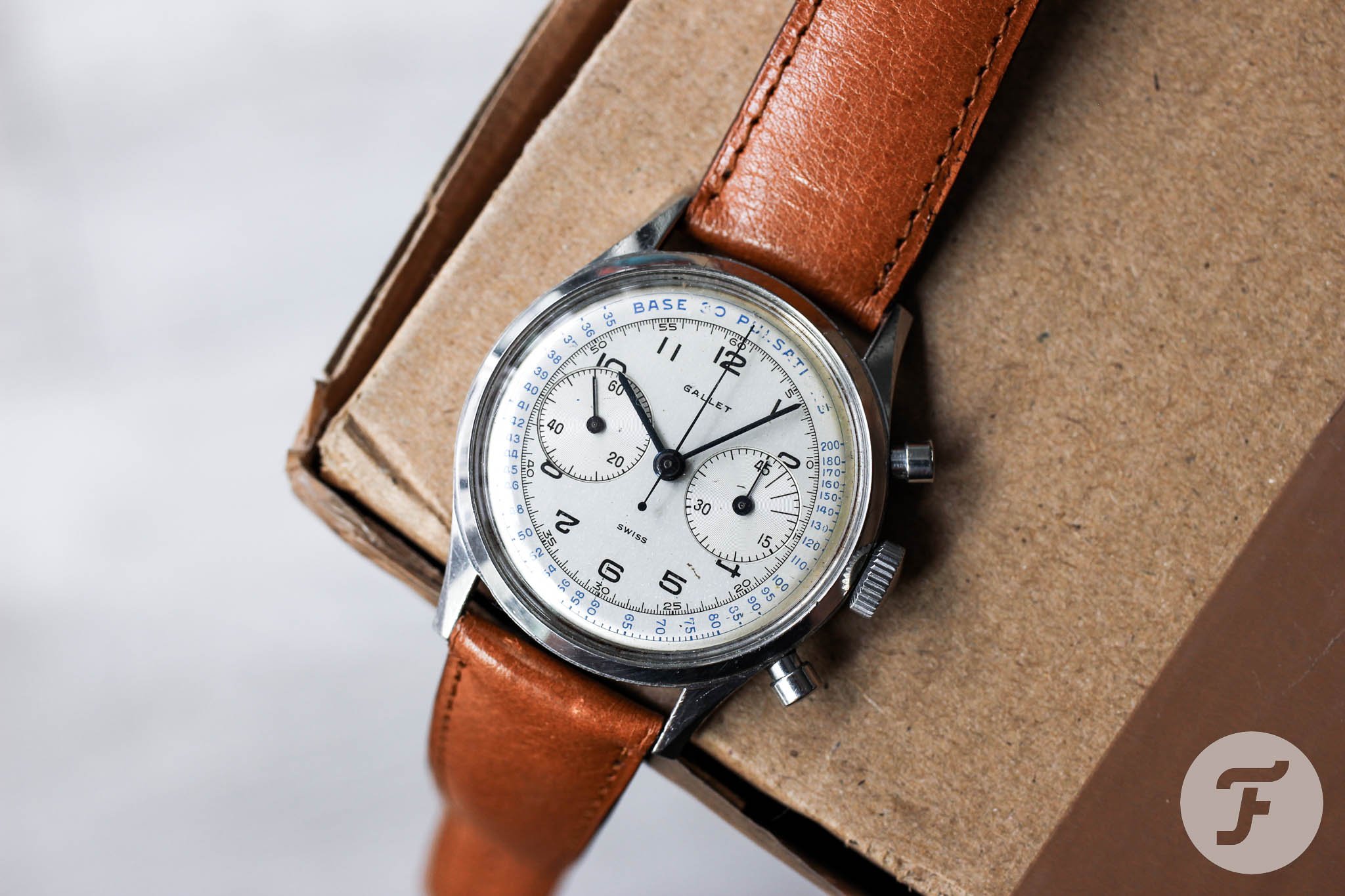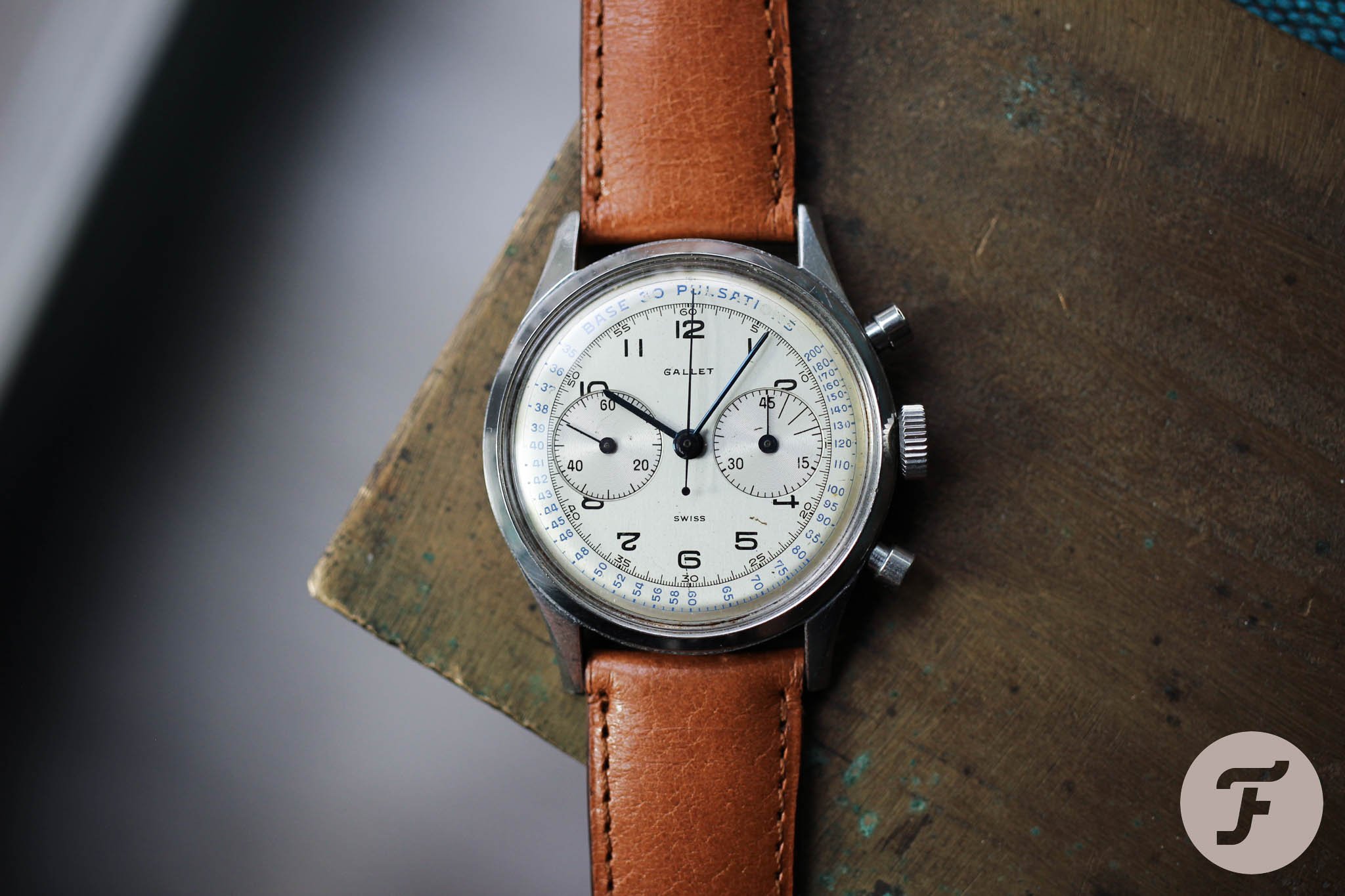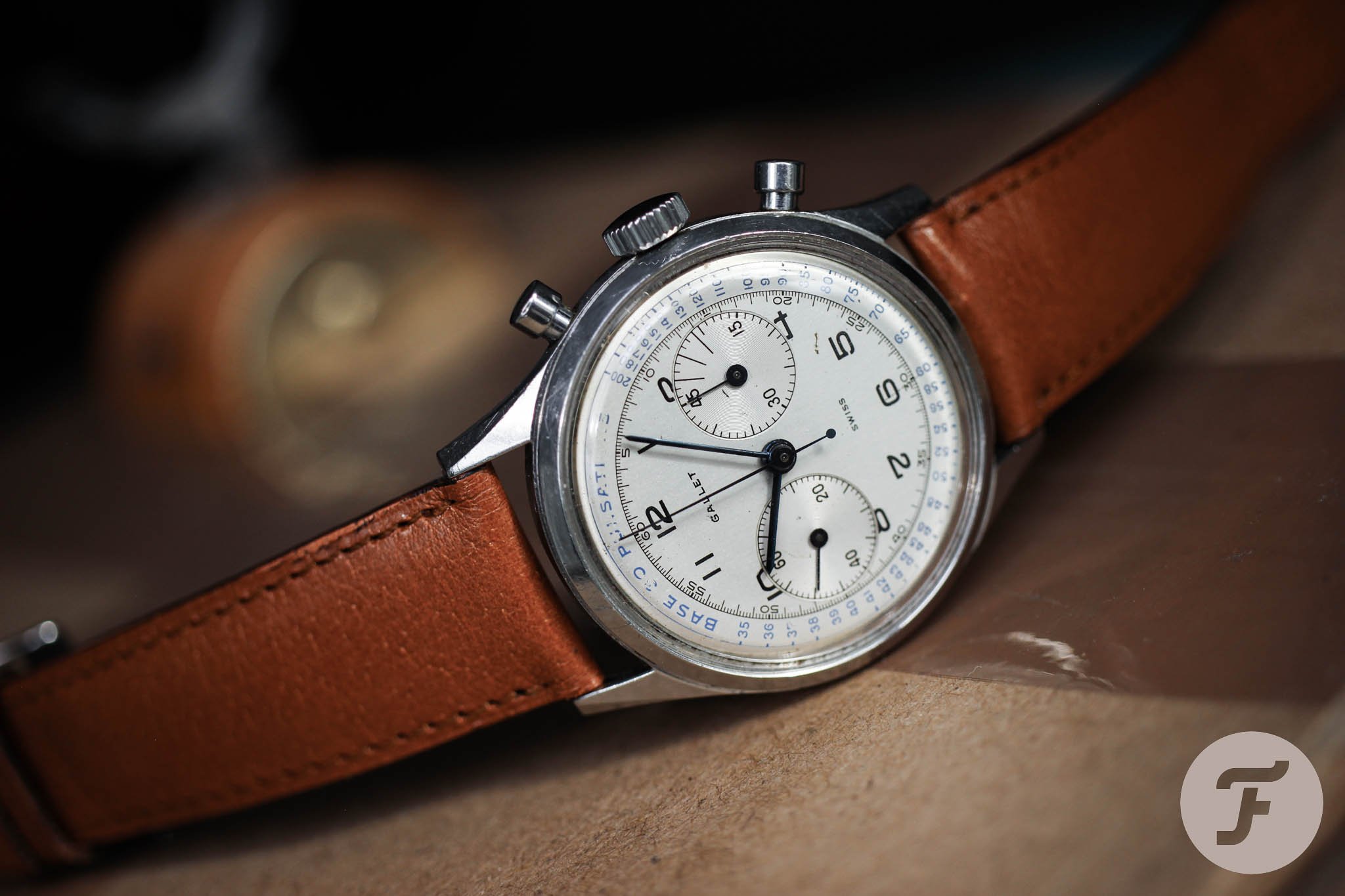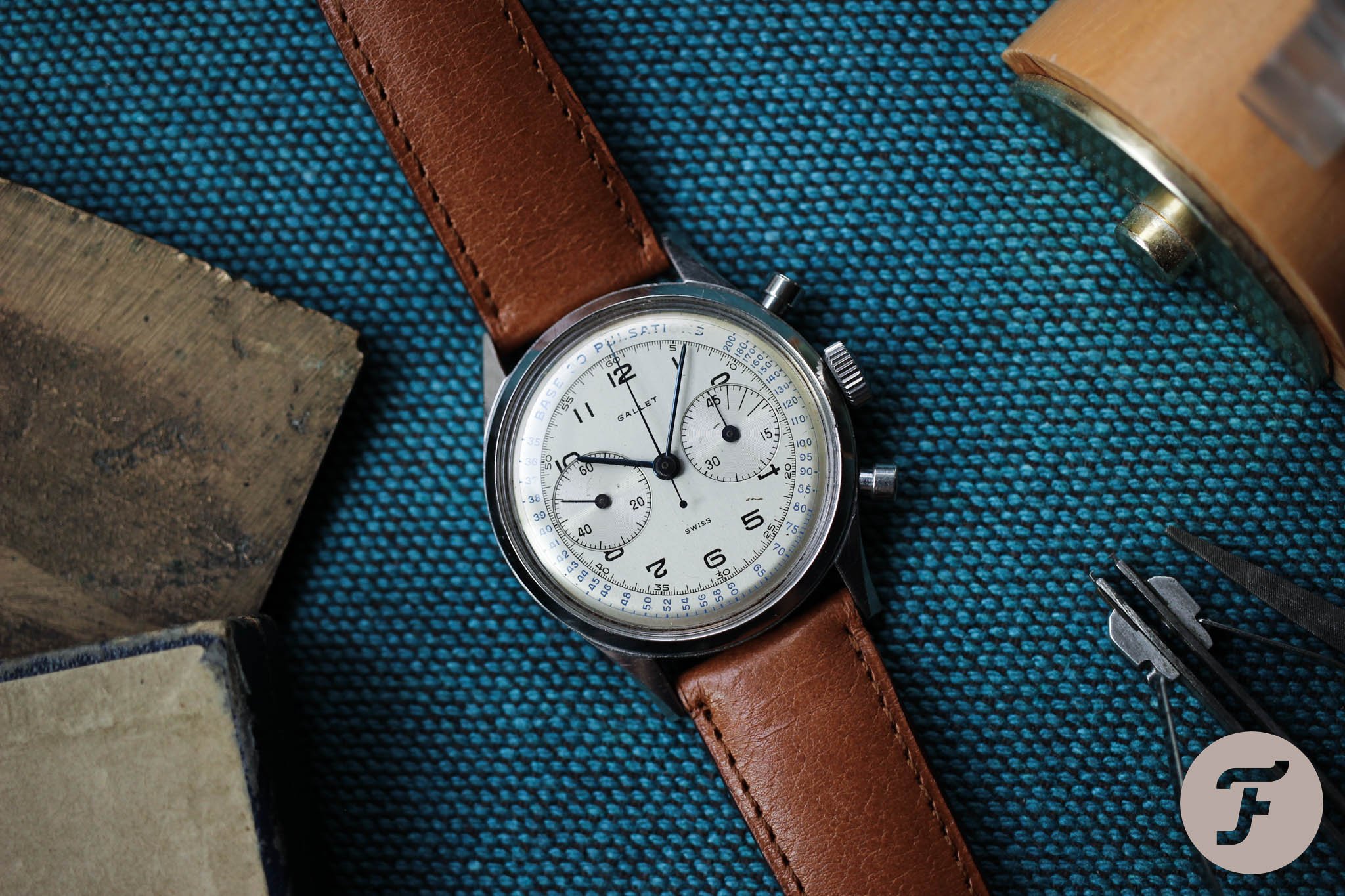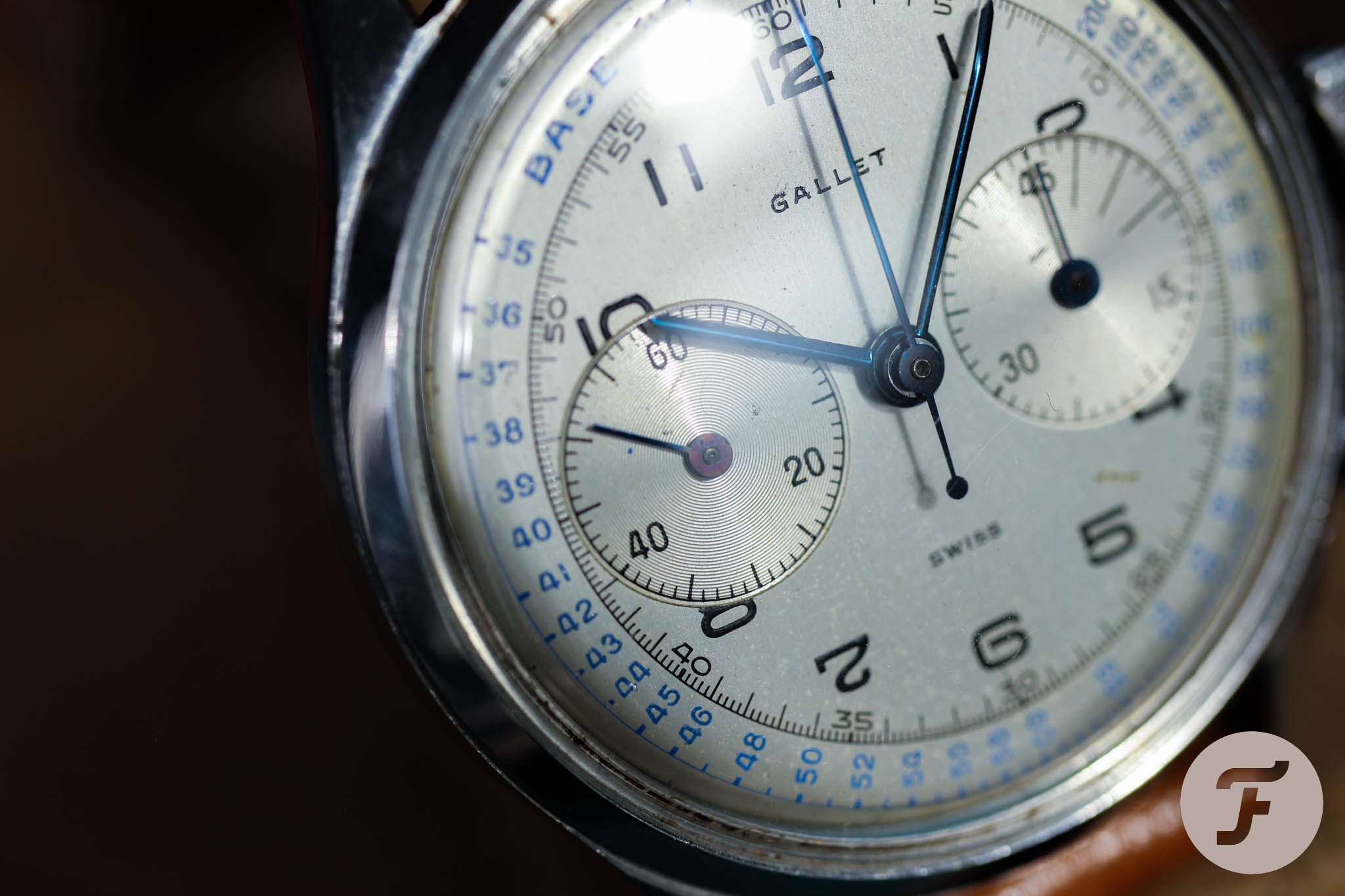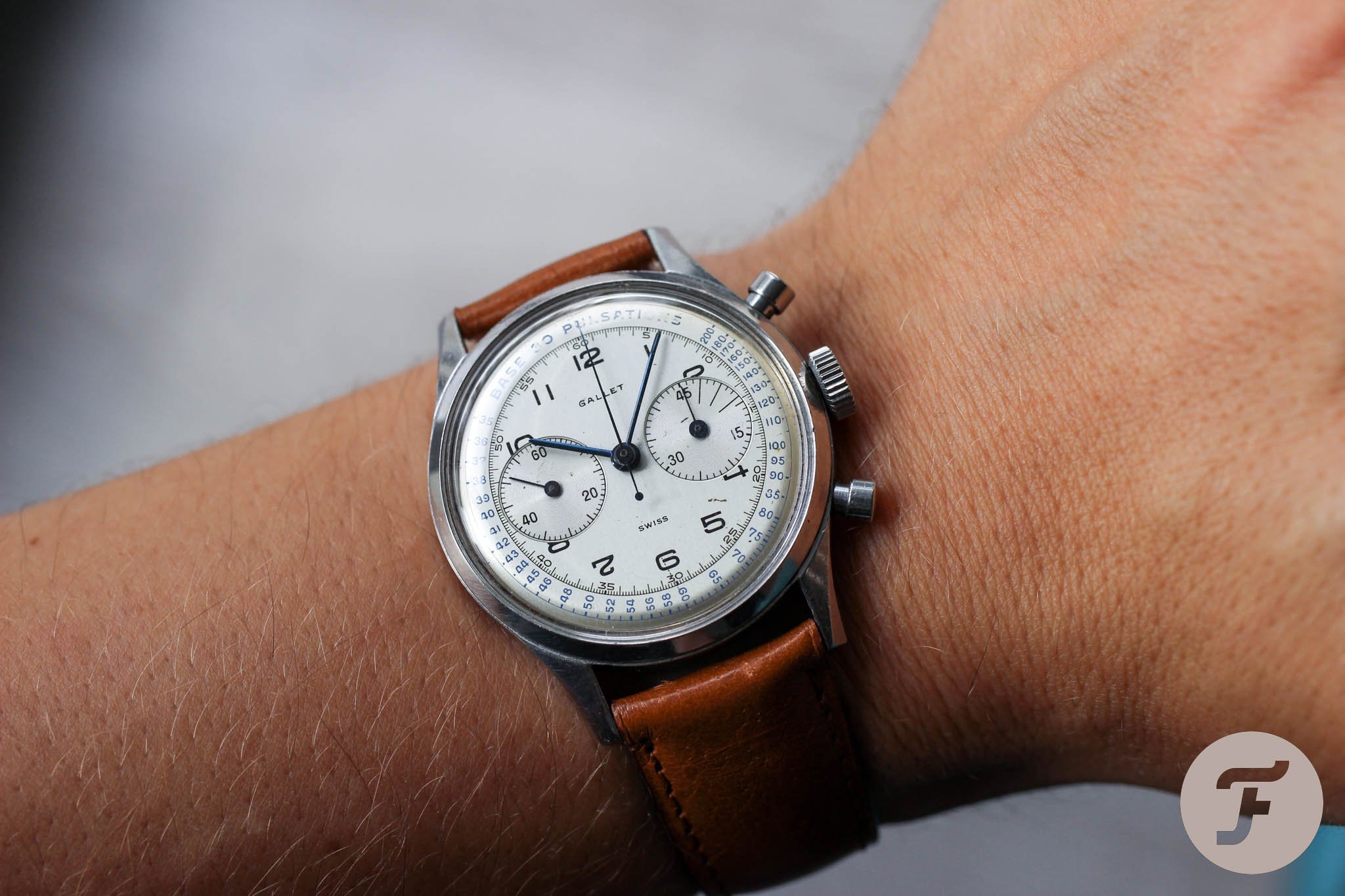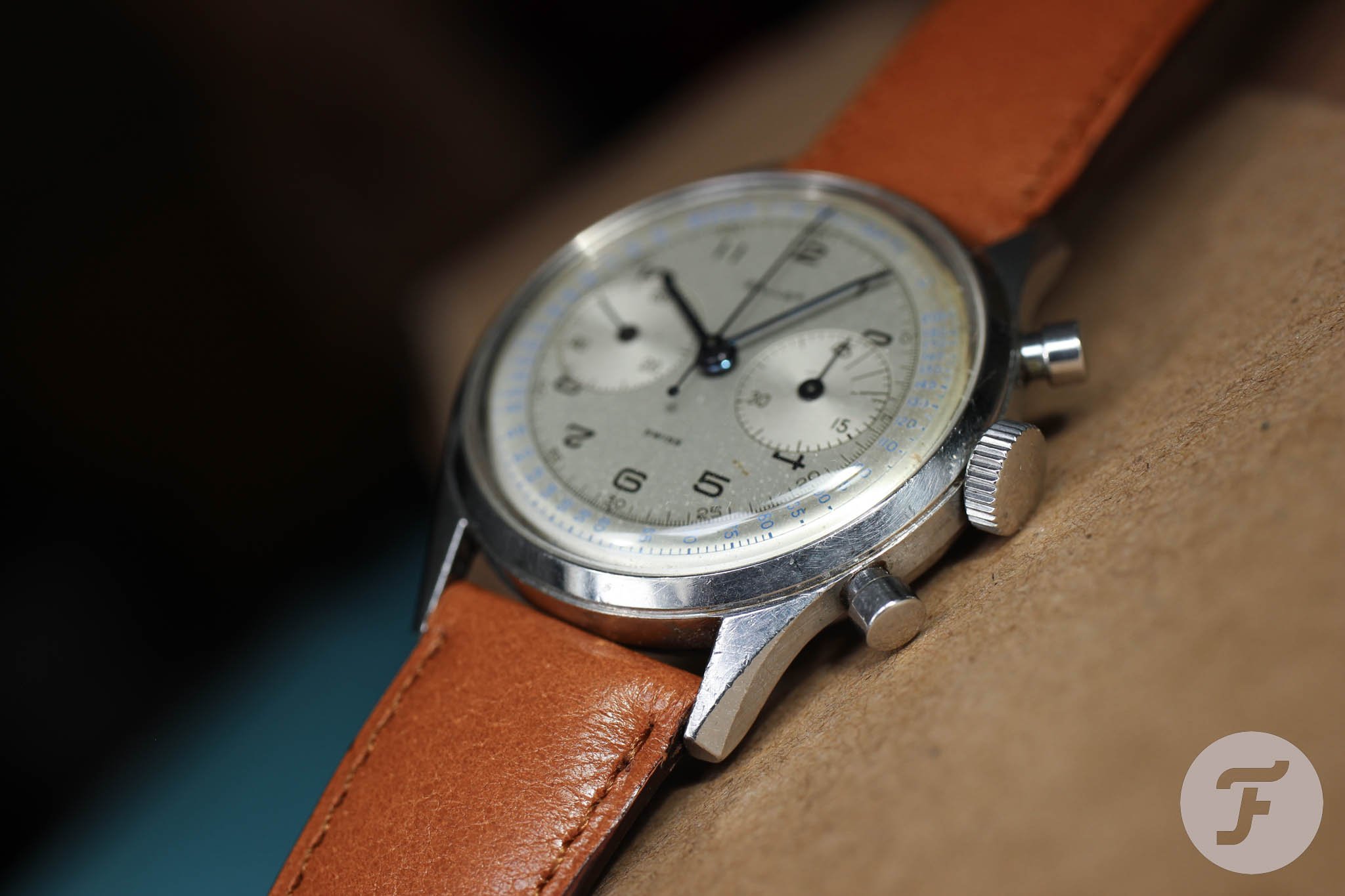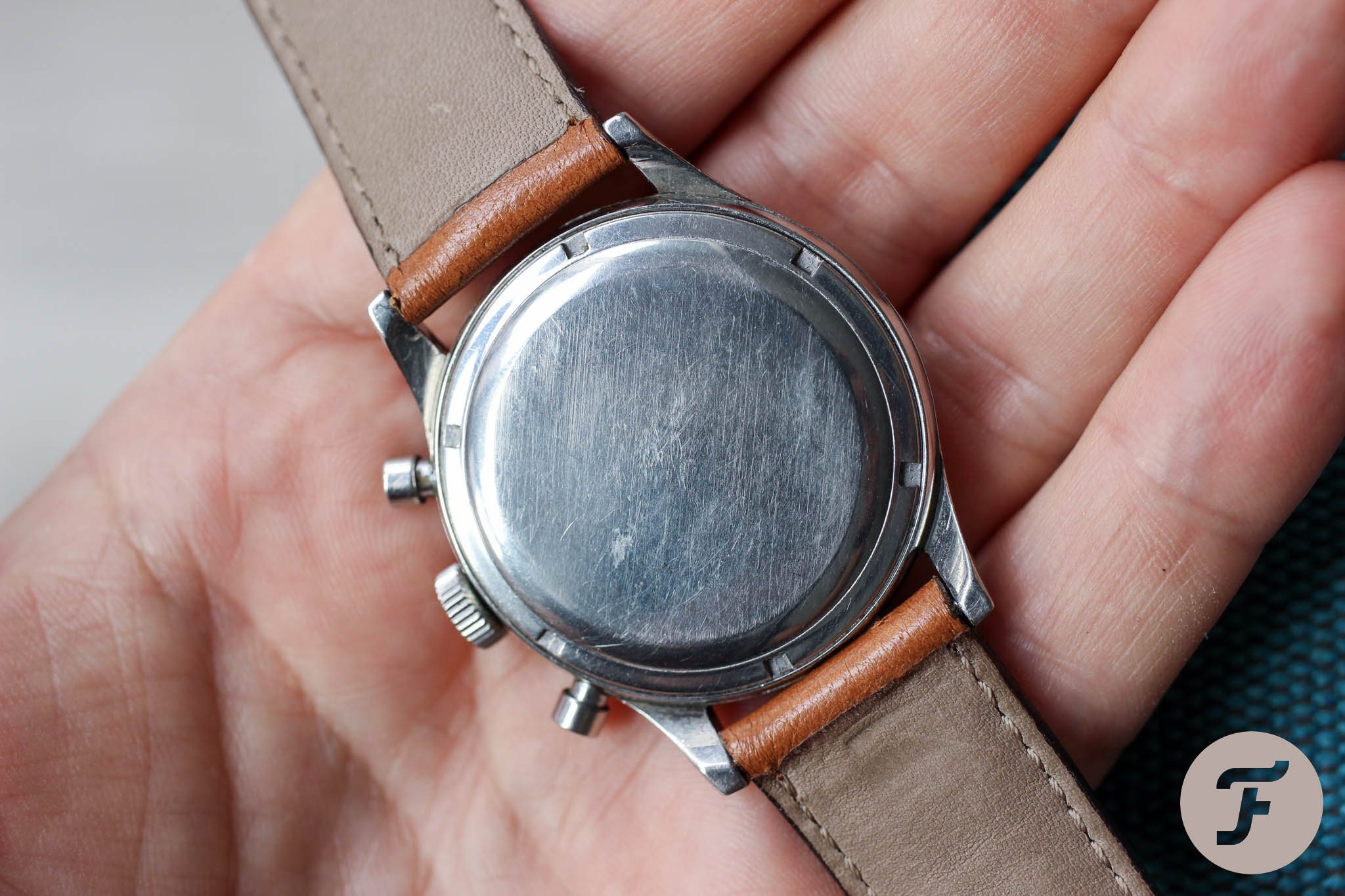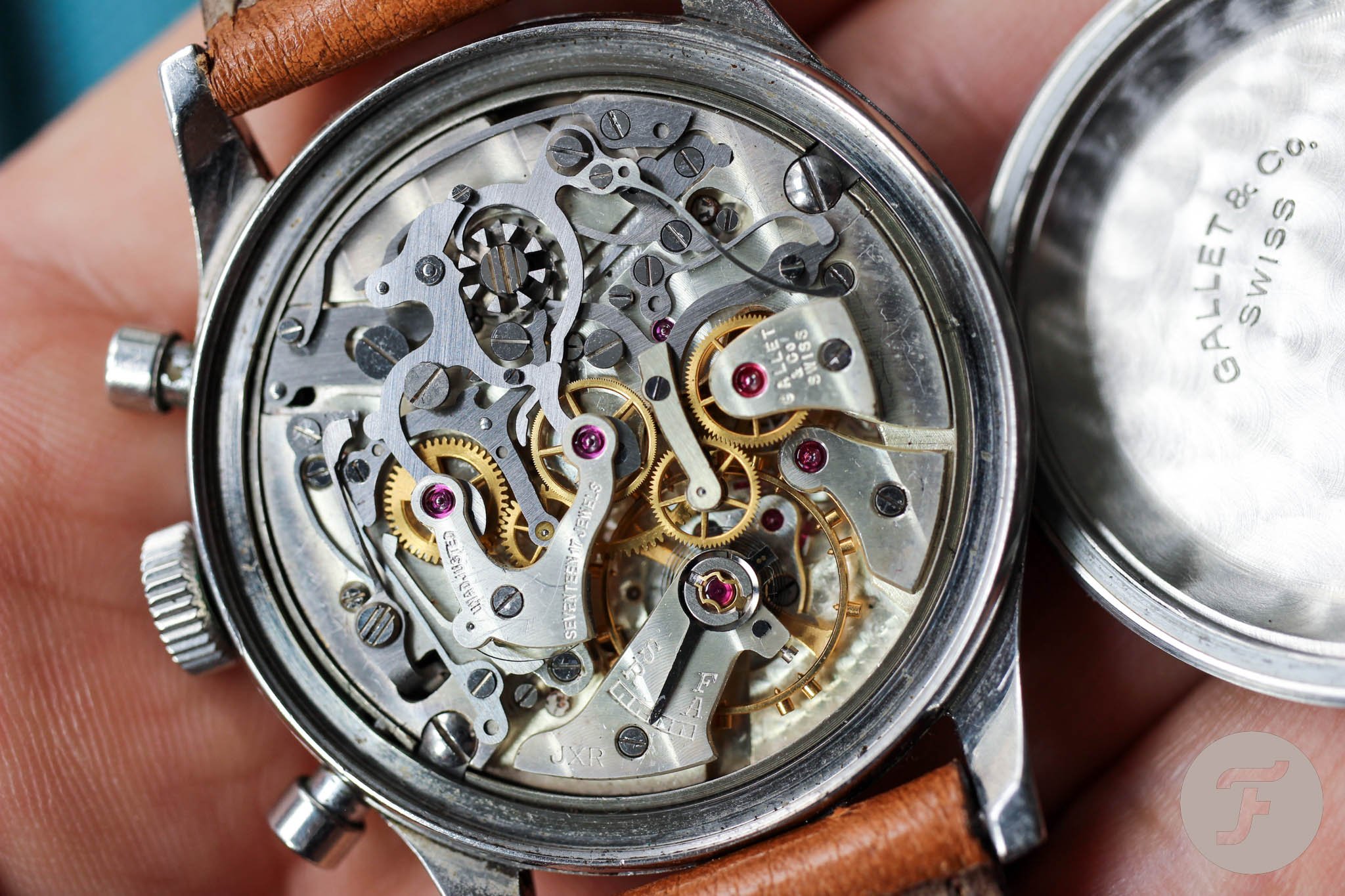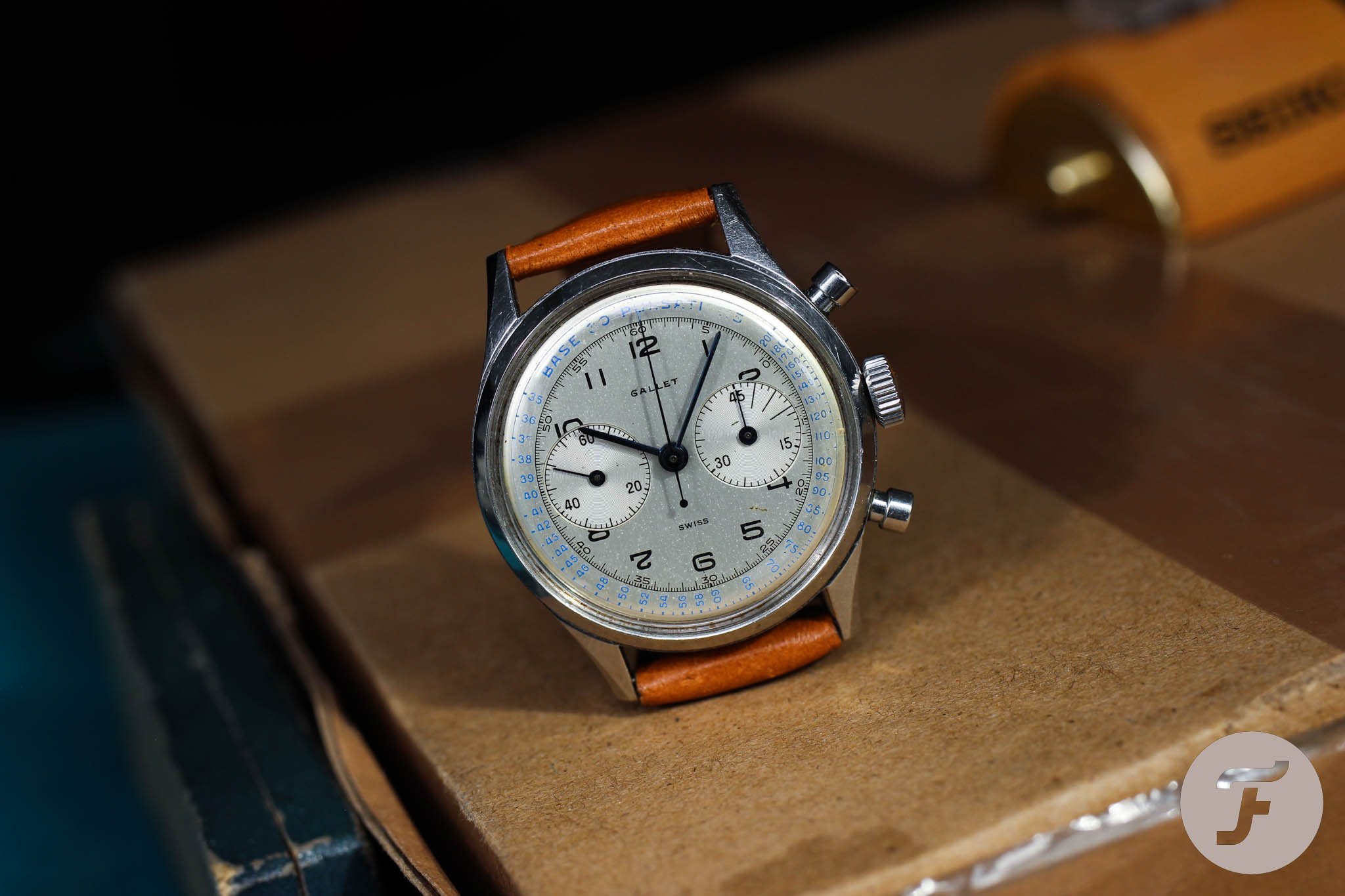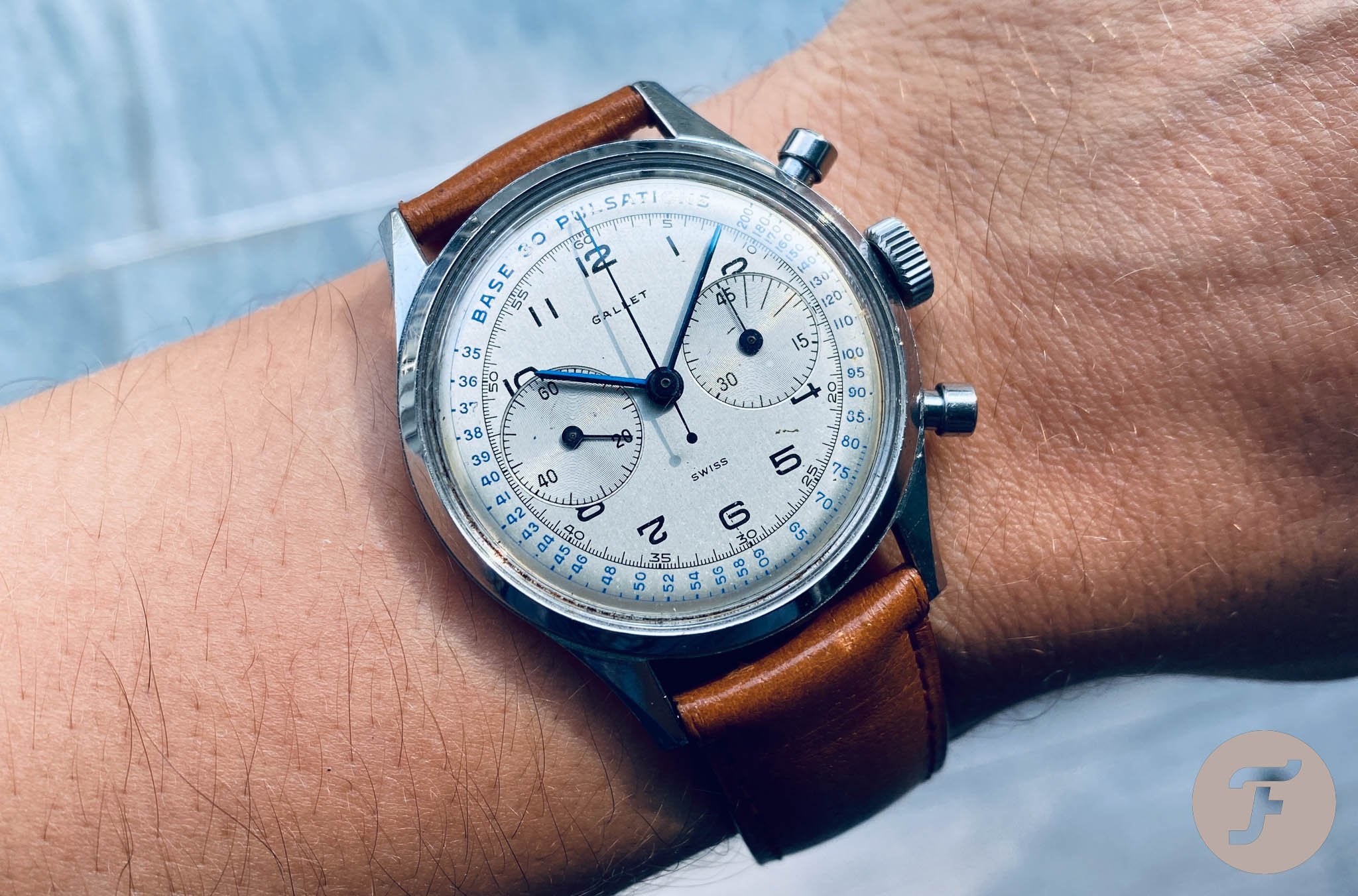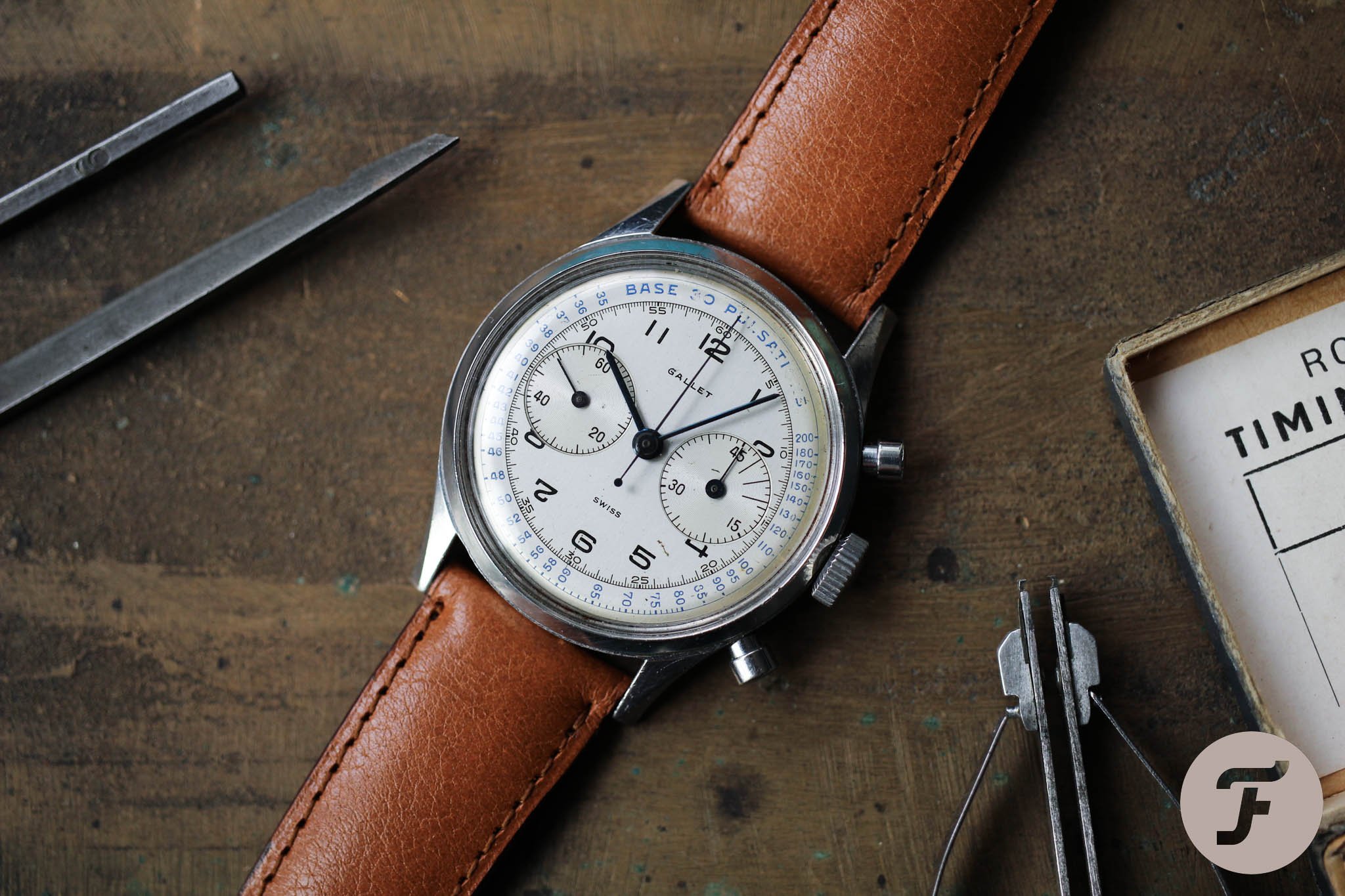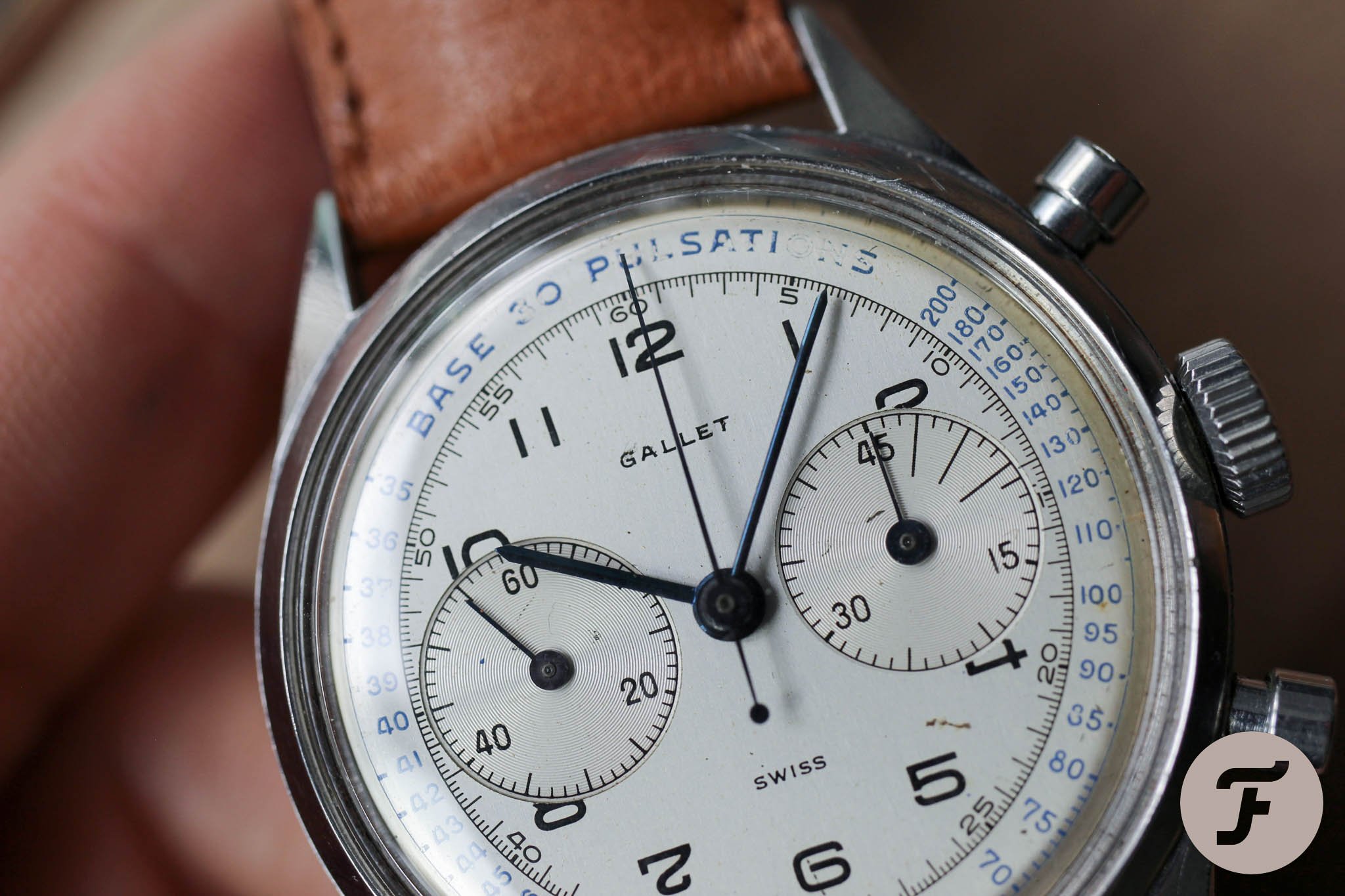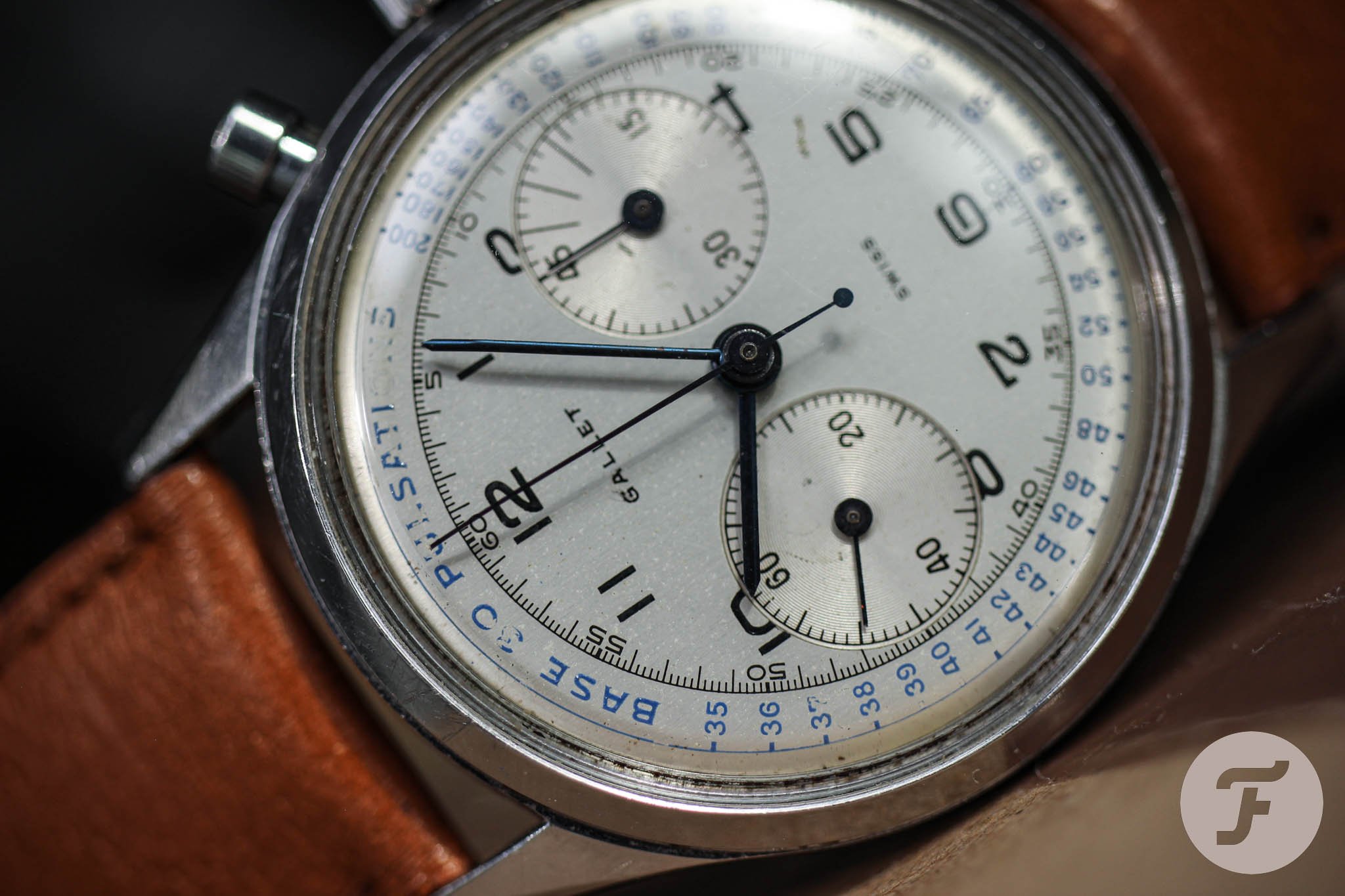#TBT The Gallet Medigraph — An Elusive Chronograph With An Excelsior Park Movement
A pulsation scale on a dial makes any chronograph a bit more gentle and human. The Medigraph is one of the most romantic Gallet chronographs of all. And it’s certainly not easy to get your hands on one…
I am not a doctor. No one close to me is a doctor. I never wanted to be one. I didn’t watch Chicago Hope, and I know Hugh Laurie only as a singer. So why am I always brought to my knees when I see a chronograph with a pulsation scale? It has to be very personal, I guess.
Self-observations with the Gallet Medigraph
My newly acquired Gallet Medigraph arrived recently, and having it for a few next days on my wrist made me think a lot. And I believe I got to the bone of my affection for pulsometers. As a student, I used to do a lot of debate competitions. Later, as an entrepreneur, I did a lot of talks in front of boards, clients, cameras, and smaller or bigger audiences. No matter the topic or how well I was prepared, I vividly remember the seconds before I climbed onto the stage.
Stage fright
Even though I had done it hundreds of times before, my heart almost always jumped from my chest. And honestly, it’s no different today. Whenever I am supposed to give an important speech, my heart starts beating so fast and so loud that I feel it has to be jumping inside. I can’t wait to be there, to open my mouth and start talking. It fascinates me that just a few seconds on stage is enough to shake off my stage fright and switch to my Presentation King mode.
The sweet spot for pulsometers
My own experience with uncontrollable heart beating probably made me so attentive to pulsometers on a subconscious level. Their rarity has added to it too, I guess. And from a visual point of view, I’ve always found pulsometers very noble and elegant. If I wanted to exaggerate a bit, I would joke that tachymeter tracks are often so visually minimized or combined with telemeters that they become a bit irrelevant. That’s not the case with the pulsation scale, which usually gets a very clean, generous exhibition on the dial.
Let’s look at the Gallet Medigraph
It’s one of the cleanest and most elegant pulsation chronographs out there. It all comes down to simplicity. There is no radium, and besides black, there is no other color on the time track and sub-registers. All you see is just the unmistakable Gallet/Excelsior Park dial style with wide, artsy numerals — especially the “coathanger” seven.
The minimalistic style was also applied to the stick hands and central chrono seconds hands with its Gallet/EP signature counterweight tail. If you do a wrist roll in the daylight, you can see the vivid reflection from the blued hands. The central chronograph hand is a bit longer than the others and reaches beyond the black border of the minute track. That’s where the high-beat area starts.
Why is a pulsometer so attractive?
I believe I can say it’s almost a rule that tachymeter markings are printed in line with the minute track. The numbers (and dashes) follow the same orbit, just the tiniest distance from the minute track and its numeric markings. A tachymeter also encircles the dial completely. A pulsation track, however, is often very spacious, and it gets a slightly different treatment for the numerals. All the pulse values are printed perpendicularly to the numbers on the minute track. Check the 6-o’clock position in the picture above to see what I mean.
Base 30 pulsations
One would think that the perpendicular positioning of the pulse values might have a disturbing effect on the integrity of the dial. In reality, that’s not true. A lot of white space around the classic “Base 30 pulsations” text also helps keep the pulsometer clean. The pulsation track doesn’t feel like it’s competing with anything. It’s quite subtle yet perfectly legible. Here, keeping all the dial graphics and hands in basic black and blue tones means a lot.
From a standard design perspective, you could say the pulsation scale is visually disruptive. Nevertheless, it’s also very functional. Once you stop the chronograph, the pulse value blends with the central timing hand like a natural extension of it. The pulsation scale is printed in blue and has slightly wider markings that clearly set it apart from the black time-reading font. In the picture above, you can see how perfectly the blue pulsation scale works with the simple blue hands.
The scarce Gallet Medigraph
Information on an official Gallet page says that the Medigraph is “one of the rarest of Gallet’s 20th-century watches. The company’s archives show that only a handful was produced initially for physicians and military medics during WWII. After the war, this model was available exclusively by special order until production was completely halted in 1952.”
I can say that I know of only a few Medigraph examples. Maybe a year ago, there was one in gold with rectangular pushers. I hesitated so long that it eventually sold out. But I got lucky a few weeks ago. I was in Copenhagen waiting for a cab when I got an email alert about a new listing for a Gallet watch. Honestly, I could not believe my eyes. I quickly checked the photos and didn’t think twice this time. Running down the stairs, I completed checkout and jumped in the car.
What service!
Within an hour, I got a call from the seller, Pascal Karp, one of the vintage-watch matadors in Brussels. He has been in the business since the late ’80s, and his selection of vintage watches is quite nice. He reassured me that he got my order, shared the story of how this watch found its way to him, and informed me about shipping. In all my time collecting watches, I don’t remember ever getting a courtesy call from a seller after I paid for a watch online. What service!
A treasured Gallet
My Gallet Medigraph comes from the collection of one of Pascal’s friends. He kept the watch for a long time and sold it to Pascal recently. Pascal said I purchased the watch minutes after he listed it online. I was lucky to open the email at the right time. All three Gallet Medigraphs with this dial that I saw in the last few years had rectangular pushers and snap-on case backs. My Gallet has a later screw-down case back and round pushers, which I prefer much more. A friend of mine bought his Gallet Medigraph for around €6,000, so you can imagine how happy I was to grab mine from a dealer for just half of that.
Last thoughts
The Gallet Medigraph will be on my wrist the next time I go on stage. Shortly before the start, I’ll put my hand on my chest, press the upper pusher, and stop it exactly when I count my 30th beat. I will be so focused on my speech that I will hardly notice the satisfying clicks so typical of fine Excelsior Park movements. Then I will look at the watch and read the number where the hand crosses the pulsation track.
I don’t know how you feel about it, but I find the pulsometer one of the most elegant scales you can find on a vintage chronograph. Whether it is on a Gallet or any other watch, I believe it deserves a place in any fine chronograph collection. Go find your ultimate pulsometer chronograph. Happy hunting!

